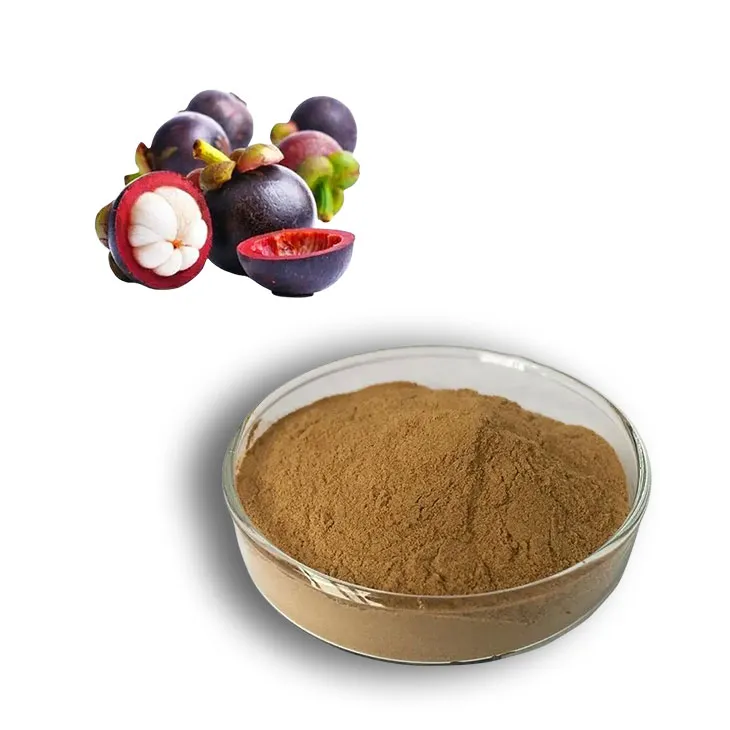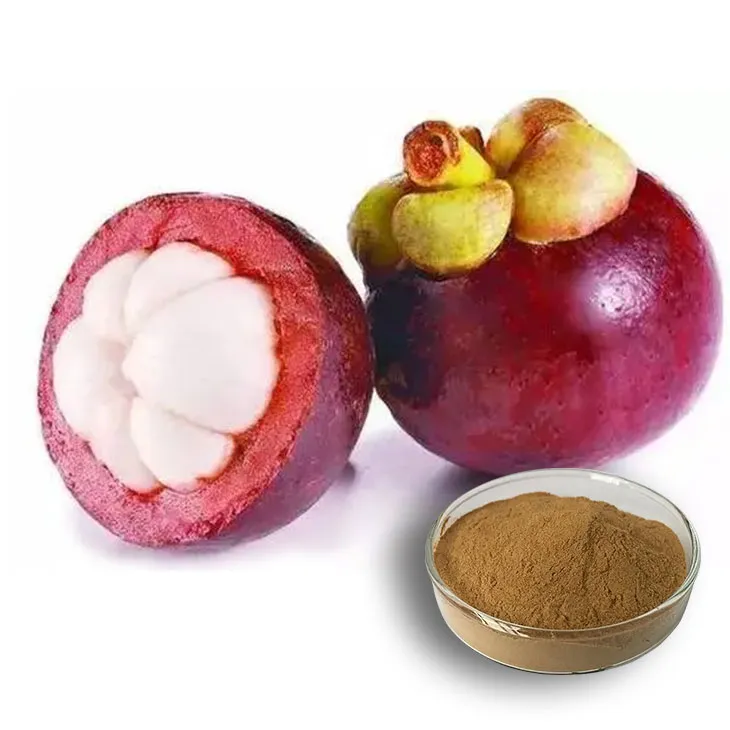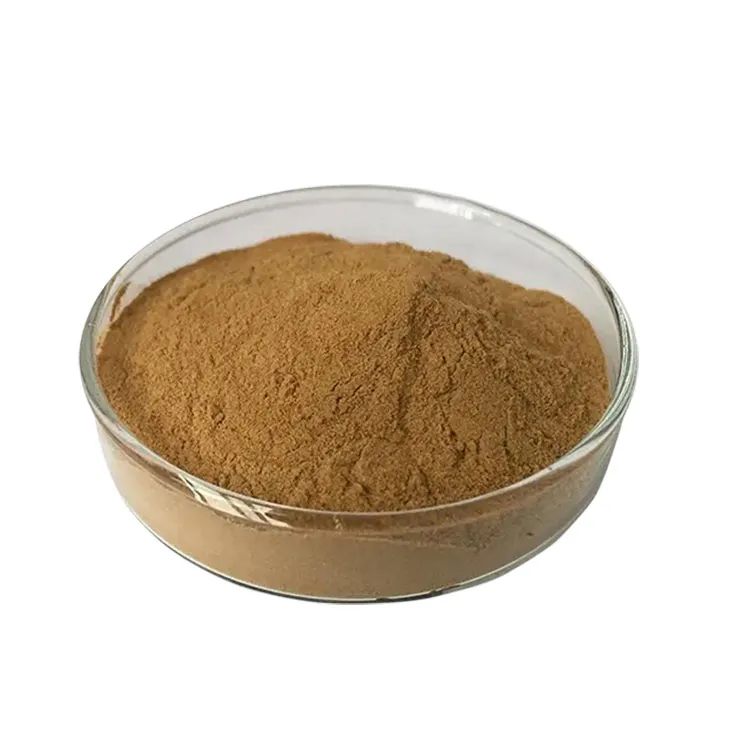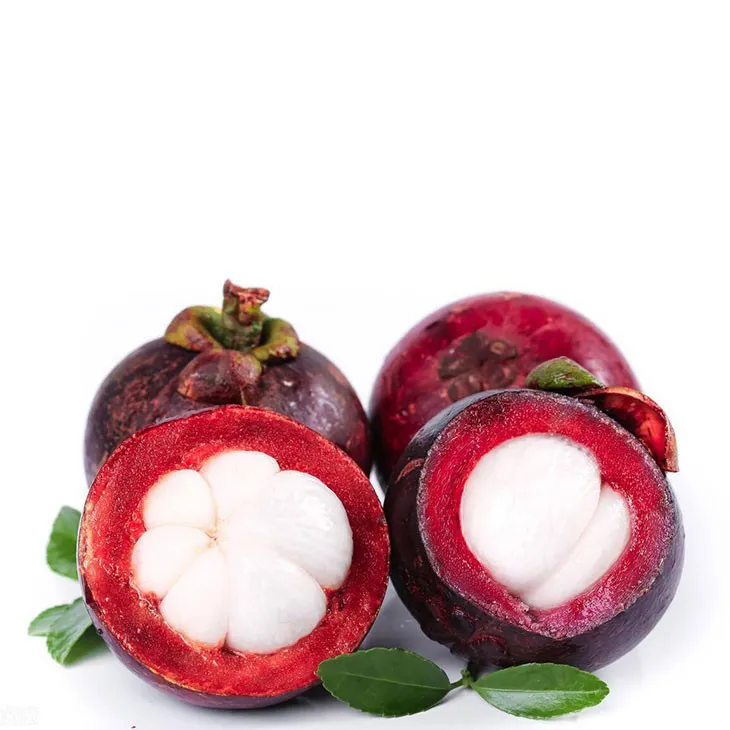- 0086-571-85302990
- sales@greenskybio.com
How to make powder with mangosteen extract powder?
2024-11-29

1. Introduction to Mangosteen
Mangosteen, a tropical fruit native to Southeast Asia, is renowned for its numerous health - beneficial properties. It contains a rich array of bioactive compounds such as xanthones, which are associated with antioxidant, anti - inflammatory, and antimicrobial activities. These properties make mangosteen an ideal candidate for extraction and further processing into powder form.

2. Understanding the Mangosteen Extract
2.1. Chemical Composition
The extract of mangosteen is a complex mixture. Besides xanthones, it may also contain flavonoids, tannins, and other phenolic compounds. These components contribute to the overall functionality and potential health benefits of the extract. For example, flavonoids are known for their antioxidant capabilities, which can help protect the body's cells from oxidative damage.
2.2. Sources of Mangosteen ExtractMangosteen extract can be obtained from different parts of the fruit, including the pericarp (the outer rind), which is the most commonly used part due to its high concentration of bioactive compounds. However, in some cases, the pulp may also be used, although it contains relatively lower levels of the desired compounds compared to the pericarp.

3. Extraction Techniques
3.1. Solvent Extraction
3.1.1. Selection of Solvents
One of the most common methods for extracting mangosteen is solvent extraction. The choice of solvent is crucial as it affects the yield and quality of the extract. Organic solvents such as ethanol and methanol are often used due to their ability to dissolve a wide range of bioactive compounds. Ethanol, in particular, is preferred in many cases because it is relatively safe for human consumption (in the context of food - grade extracts) and has a good solubility for mangosteen's bioactive components.
3.1.2. Extraction ProcessThe extraction process typically involves grinding the mangosteen pericarp into a fine powder. This powdered material is then mixed with the selected solvent in a suitable ratio. For example, a common ratio could be 1:5 (mangosteen powder to solvent by weight). The mixture is then stirred continuously for a specific period, usually several hours, at a controlled temperature. A temperature range of 25 - 50°C is often considered suitable for solvent extraction of mangosteen extract. This helps to ensure that the bioactive compounds are effectively dissolved into the solvent without being degraded.
3.2. Supercritical Fluid Extraction3.2.1. Principle of Supercritical Fluid Extraction
Supercritical fluid extraction (SFE) is another advanced technique. In this method, a supercritical fluid, often carbon dioxide (CO₂), is used as the extracting agent. A supercritical fluid has properties between those of a liquid and a gas. CO₂ is a popular choice because it is non - toxic, non - flammable, and has a relatively low critical temperature (31.1°C) and pressure (73.8 bar), which makes it easy to handle in the extraction process.
3.2.2. SFE Process for MangosteenThe mangosteen material (usually dried and ground) is placed in an extraction vessel. The supercritical CO₂ is then pumped into the vessel at the appropriate pressure and temperature conditions. The supercritical CO₂ penetrates the mangosteen matrix and selectively extracts the bioactive compounds. After the extraction, the pressure is reduced, and the CO₂ returns to its gaseous state, leaving behind the concentrated extract. This method has the advantage of producing a relatively pure extract with minimal solvent residues compared to solvent extraction.

4. Factors Affecting the Extraction
4.1. Temperature
Temperature plays a significant role in the extraction process. As mentioned earlier, for solvent extraction, a temperature range of 25 - 50°C is commonly used. If the temperature is too low, the extraction rate may be slow as the solubility of the bioactive compounds in the solvent is reduced. On the other hand, if the temperature is too high, it can lead to the degradation of some heat - sensitive compounds, such as certain xanthones. In supercritical fluid extraction, precise control of temperature is also crucial to maintain the supercritical state of the fluid and optimize the extraction efficiency.
4.2. TimeThe extraction time is another important factor. In solvent extraction, a typical extraction time may range from 2 - 8 hours, depending on the nature of the material, the solvent used, and the desired extraction efficiency. Longer extraction times may increase the yield of the extract, but it may also lead to the extraction of unwanted compounds or the degradation of some valuable components. In supercritical fluid extraction, the extraction time is usually shorter compared to solvent extraction, typically ranging from 1 - 3 hours, due to the high diffusivity and solubility of the supercritical fluid.
4.3. Particle SizeThe particle size of the mangosteen material before extraction affects the extraction efficiency. Finer particle sizes generally result in a larger surface area, which allows for better contact between the material and the extracting agent (solvent or supercritical fluid). For example, when the mangosteen pericarp is ground into a powder with a particle size of less than 1 mm, it can significantly improve the extraction yield. However, overly fine particles may also cause problems such as clogging in the extraction equipment.

5. Purification of the Extract
5.1. Filtration
After the extraction process, the resulting mixture contains the extract along with solid residues (such as cell debris from the mangosteen material). Filtration is the first step in purification. A filter with an appropriate pore size, such as a 0.45 - μm filter, can be used to remove these solid particles. This helps to obtain a relatively clear extract solution, which is a prerequisite for further purification steps.
5.2. CentrifugationCentrifugation can be used as an additional or alternative method to filtration for separating the solid - liquid components. By subjecting the extract - containing mixture to centrifugal force, the heavier solid particles are forced to the bottom of the centrifuge tube, and the clear supernatant, which contains the extract, can be collected. This method is particularly useful when dealing with larger volumes of extract or when the extract contains fine particles that are difficult to filter out completely.
5.3. Chromatographic Purification5.3.1. Column Chromatography
Column chromatography is a more advanced purification technique. A chromatography column is packed with a suitable stationary phase, such as silica gel or a polymeric resin. The extract solution is then loaded onto the column, and different bioactive compounds in the extract are separated based on their differential affinities for the stationary phase and the mobile phase (usually a solvent). By carefully selecting the stationary and mobile phases, specific xanthones or other desired compounds can be purified from the extract.
5.3.2. High - Performance Liquid Chromatography (HPLC)HPLC is a highly efficient and precise chromatographic method. It uses a high - pressure pump to force the extract solution through a column filled with a very fine stationary phase. The separation is based on the same principle as column chromatography but with much higher resolution. HPLC can be used to purify individual xanthones or other bioactive compounds to a very high degree of purity, which is especially important for applications where a high - quality Mangosteen extract powder is required, such as in the pharmaceutical or high - end nutraceutical industries.
6. Drying and Powder Making
6.1. Drying Methods
6.1.1. Spray Drying
Spray drying is a commonly used method for converting the purified mangosteen extract into powder form. In this process, the purified extract solution is sprayed into a hot drying chamber through a nozzle. The hot air in the chamber quickly evaporates the solvent (usually water or ethanol), leaving behind fine powder particles. Spray drying has the advantage of producing a powder with a relatively uniform particle size and good flow properties. However, it requires specialized equipment and careful control of parameters such as inlet air temperature, feed rate, and atomization pressure to ensure the quality of the final powder.
6.1.2. Freeze DryingFreeze drying, also known as lyophilization, is another option. In this method, the extract solution is first frozen, and then the frozen water (or other solvents) is removed by sublimation under reduced pressure. Freeze - dried Mangosteen extract powder has a porous structure, which can be beneficial for certain applications, such as in controlled - release formulations. However, freeze drying is a relatively slow and energy - intensive process compared to spray drying.
6.2. Considerations in Powder Making6.2.1. Additives
Sometimes, additives may be added during the powder - making process. For example, anti - caking agents such as silicon dioxide may be added in small amounts (usually less than 2%) to prevent the powder from clumping together. Other additives may include stabilizers or flavor enhancers, depending on the intended use of the powder.
6.2.2. Particle Size ControlControlling the particle size of the final powder is important for its handling and application. If the powder is too fine, it may cause dusting problems during handling, while overly coarse powder may have poor solubility or flow properties. Sieving or milling can be used to adjust the particle size of the powder to the desired range.
7. Packaging of the Mangosteen extract powder
7.1. Packaging Materials
The choice of packaging materials is crucial for preserving the quality of the mangosteen extract powder. Oxygen - and moisture - barrier materials are preferred. For example, laminated aluminum foil pouches are often used. These pouches can effectively prevent the ingress of oxygen and moisture, which can cause oxidation and spoilage of the powder. Additionally, glass bottles with tight - fitting lids can also be used, especially for higher - end products or those intended for long - term storage.
7.2. Packaging EnvironmentThe packaging should be carried out in a clean and dry environment. This helps to prevent contamination of the powder during the packaging process. For example, the relative humidity in the packaging area should be controlled at a low level, preferably below 40%, to avoid moisture absorption by the powder.
8. Quality Control
8.1. Chemical Analysis
Chemical analysis is essential to ensure the quality of the mangosteen extract powder. This includes the determination of the content of bioactive compounds such as xanthones. High - performance liquid chromatography (HPLC) can be used for accurate quantification of these compounds. Additionally, other parameters such as the content of residual solvents (if any) should also be measured to ensure that they are within the acceptable limits.
8.2. Microbiological TestingMicrobiological testing is necessary to ensure the safety of the powder. Tests for total plate count, yeast and mold count, and the presence of pathogenic bacteria such as Salmonella and Escherichia coli should be carried out. The powder should meet the relevant microbiological standards for food or pharmaceutical products, depending on its intended use.
8.3. Physical Properties TestingTesting of physical properties such as particle size distribution, powder flowability, and bulk density is also important. These properties can affect the handling, formulation, and application of the powder. For example, a powder with good flowability is easier to process in automated manufacturing processes.
FAQ:
What are the important properties of mangosteen for extraction?
Mangosteen contains various bioactive compounds such as xanthones. These compounds are of great interest for extraction as they may have antioxidant, anti - inflammatory, and other beneficial properties. The high content of these valuable substances makes mangosteen a suitable candidate for extraction to obtain a useful extract powder.
How does temperature affect the extraction of mangosteen extract powder?
Temperature plays a crucial role in the extraction process. A suitable temperature can enhance the solubility of the active compounds in the solvent. If the temperature is too low, the extraction may be slow and incomplete. However, if it is too high, it might cause the degradation of some heat - sensitive compounds. Therefore, an optimal temperature range needs to be determined to ensure efficient and high - quality extraction.
What are the typical purification steps for mangosteen extract before making it into powder?
Typical purification steps may include filtration to remove solid impurities, followed by centrifugation in some cases to further separate the extract from unwanted substances. Chromatographic techniques might also be employed to purify specific compounds. These steps help in obtaining a pure extract which is then more suitable for powder making.
How important is time in the extraction of mangosteen extract powder?
Time is an important factor. Sufficient extraction time is required to ensure that a maximum amount of the desired compounds are extracted from the mangosteen. However, overly long extraction times may lead to the extraction of unwanted substances or degradation of the active compounds. The optimal extraction time depends on various factors such as the extraction method, temperature, and the nature of the solvent used.
What are the key packaging requirements for mangosteen extract powder?
The packaging for mangosteen extract powder should be airtight to prevent oxidation. It should also protect the powder from moisture, light, and heat. Packaging materials such as high - quality plastic or foil laminates are often used. Additionally, proper labeling should be done to provide information about the product, including its contents, usage instructions, and expiration date.
Related literature
- Mangosteen: Bioactive Compounds and Health Benefits"
- "Advanced Extraction Techniques for Mangosteen Extract"
- "Purification and Characterization of Mangosteen Extract"
- "Packaging Considerations for Nutraceutical Powders: The Case of Mangosteen Extract Powder"
- ▶ Hesperidin
- ▶ Citrus Bioflavonoids
- ▶ Plant Extract
- ▶ lycopene
- ▶ Diosmin
- ▶ Grape seed extract
- ▶ Sea buckthorn Juice Powder
- ▶ Fruit Juice Powder
- ▶ Hops Extract
- ▶ Artichoke Extract
- ▶ Mushroom extract
- ▶ Astaxanthin
- ▶ Green Tea Extract
- ▶ Curcumin
- ▶ Horse Chestnut Extract
- ▶ Other Product
- ▶ Boswellia Serrata Extract
- ▶ Resveratrol
- ▶ Marigold Extract
- ▶ Grape Leaf Extract
- ▶ New Product
- ▶ Aminolevulinic acid
- ▶ Cranberry Extract
- ▶ Red Yeast Rice
- ▶ Red Wine Extract
-
Carrageenan Extract Powder
2024-11-29
-
Jujube Extract
2024-11-29
-
Diosmin
2024-11-29
-
Saponin Extract
2024-11-29
-
Chasteberry Extract
2024-11-29
-
Apricot Powder
2024-11-29
-
Shikonin
2024-11-29
-
Curcuma Longa Extract/Turmeric extract
2024-11-29
-
Cocoa Extract
2024-11-29
-
Red Date Extract
2024-11-29





















